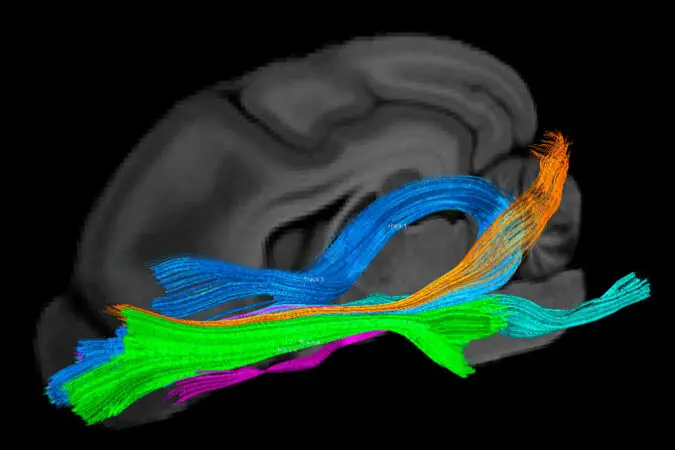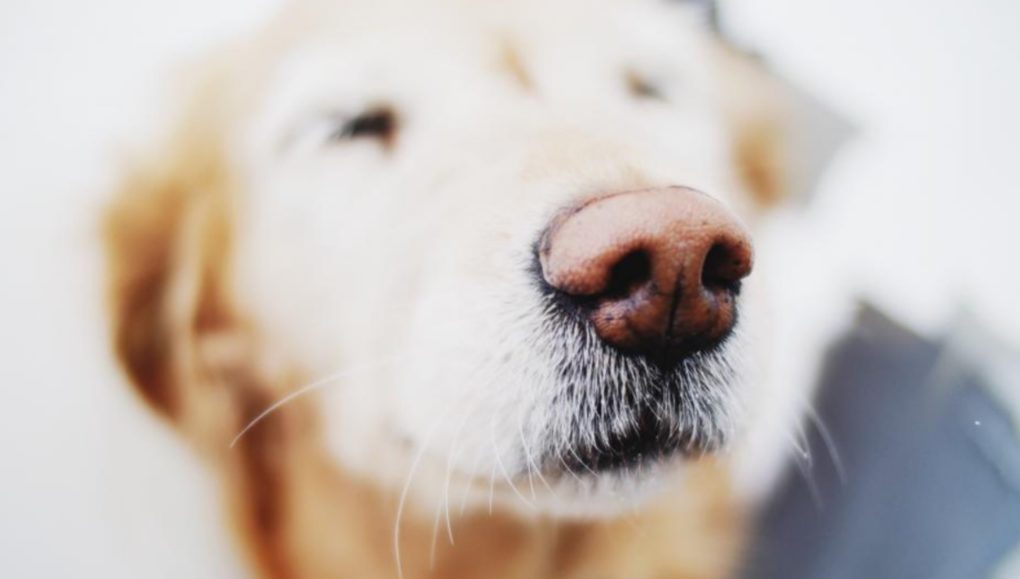Neuroscientists Discover Dogs Can Literally “See” With Their Nose
Dogs are renowned for their capacity to locate and track objects using their powerful sense of smell. Now, a new study has shown that dogs develop this talent through unique brain structures connected to their visual system.
The results offer a first-of-its-kind anatomical description of how dogs can literally “see” the world through their noses.
According to the study published in The Journal of Neuroscience on July 11, dogs are the first known species where vision and the sense of smell are connected in the brain in such a way.
The results offer a first-of-its-kind anatomical description of how dogs “see” the world with their noses. https://t.co/uBgoC91oC4
— Science News (@ScienceNews) July 26, 2022
Although it’s not known how dogs experience the two senses functioning together, the discovery suggests smell and vision in dogs are somehow integrated.
“Scent contributes to the visual cortex in dogs, but a dog’s experience is hard for us to know,” said veterinary neurologist Philippa Johnson, an associate professor at Cornell University’s College of Veterinary Medicine and senior author of the study. “But I think they can use scent to work out where things are.”
“The most interesting thing about this research are the connections from the nose up to the occipital lobe, which houses the visual cortex,” Johnson said.
Her team examined MRI scans of the brains of 23 dogs that showed neurological links between the olfactory bulb, which is responsible for the recognition of odors, and the occipital lobe of the dogs’ brains, which is responsible for the processing of vision.
“Scent contributes to the visual cortex in dogs, but a dog’s experience is hard for us to know,” Johnson said. “But I think they can use scent to work out where things are.”
Johnson said that when humans enter a room, they primarily utilize their sense of sight to determine who is present or how the furniture is arranged.

In some ways, the results of the study aren’t surprising.
The olfactory bulb in a dog’s brain is around 30 times larger than in a human brain, which is probably why dogs have a far more sensitive sense of smell than people do. Dogs’ nostrils can contain up to a billion smell receptors, compared to only 5 million in humans.
Johnson’s team discovered that in dogs, one tract was new, connecting the olfactory bulb to the occipital lobe, the part of the dog brain that handles vision.
E-Course: Complete Guide to Wildcrafting and Foraging (Ad)
“There have been lots of people who theorized that this connection existed, based on the behavior of trained dogs and detection dogs,” said Eileen Jenkins, a retired army veterinarian and expert on working dogs who was not involved in the study. “But nobody has been able to prove it. This is fabulous.”
Unlike humans, dogs use scent to evaluate their environment and determine where they are in it. This is supported by the behavior of blind dogs, who don’t appear to be significantly affected by their loss of sight.
One of the ophthalmologists at the hospital here said he regularly has owners that bring their dogs in, and when he tests their eyesight, they are completely blind — but the owners literally won’t believe him,” Johnson said.
“The blind dogs act completely normally. They can play fetch. They can orientate around their environment, and they don’t bump into things.”
The discovery suggests the sense of smell is much more vital to dogs than previously known.
“We already have an indication that their vision isn’t acute and as complex as human vision. However, we now know that scent is part of their visual processing, so dogs might have a completely different experience of the world compared to us,” added Johnson.
“This would certainly help to explain why dogs that go blind seem to function so well, at least when they’re in a familiar environment where their olfactory sense can map onto their visual memories of spatial relationships,” said James Serpell by email, an emeritus professor of ethics and animal welfare at the University of Pennsylvania School of Veterinary Medicine, who wasn’t involved in the study.
Johnson and her colleagues are now planning additional studies to examine the brains of other animals, such as horses and cats, that also depend on smell more than humans do.
“I have actually had a play with some cat data,” Johnson said. “Cats have the most amazing olfactory system too, and probably more connections than the dog that I can see.”
But calm down, dog people. “That’s only preliminary data,” she added.
Like this article? Get the latest from The Mind Unleashed in your inbox. Sign up right here.
Source: The Mind Unleashed




